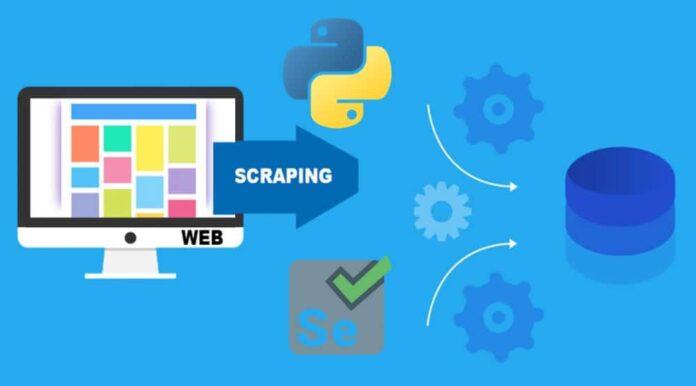In order to make better decisions, businesses must seek and harvest as much data as possible. And because data acquisition in large quantities is the end goal, it is often recommended that you use tools that automate the process from start to finish.
About 79% of big organizations admitted that data is principally responsible for their success rate, and failure to use large amounts of data regularly could lead to bankruptcy.
But the tools used can very much affect how easily they can access this data. We currently have two popular tools dominating the automated data extraction market.
Puppeteer and Selenium are libraries built by different developers and languages for a similar purpose; automated web scraping.
Even though Selenium has been around for much longer, Puppeteer has grown to compete with Selenium.
In the following sections, we will describe what these tools are and how exactly they differ.
What Is Puppeteer?
Puppeteer can be defined as the Node.js library used to control and access headless Chrome remotely. The Node.js framework supplies the library with highly sophisticated APIs that control headless Chrome.
A major advantage here is that it allows you to remotely control the browser to avoid dealing with DevTools protocols directly. This makes it easier to use even by newbies and those without a solid programming background.
Aside from the above advantage, many people also use Puppeteer because it provides automation and speed, which are crucial for large-scale operations such as web scraping and data manipulation.
Understanding how to work with this library requires completing a short Puppeteer tutorial at oxylabs.io first. This will equip you with the basic knowledge to run headless browsers or configure non-headless browsers.
Uses Cases of Puppeteer

There are several instances where Puppeteer can be useful, but some of the most common are highlighted below:
-
Automated Web Scraping
Since data has become very important, more and more tools are being developed to facilitate the process. The best tools give priority to automation, and Puppeteer does just that.
The library allows you to design a script that can intelligently interact with JavaScript websites and harvest their content with little or no interference on your part.
This guarantees speed and better accuracy of the final results.
-
UI Testing
Puppeteer is also popular for its application in testing websites. The tool can mimic every possible human activity on a website, including mouse and keyboard activities. This allows it to determine how well the website can handle users.
Puppeteer can also check other issues such as website responsiveness and loading time.
Its ability to take screenshots can capture that particular issue so that intentional efforts can be made to fix them promptly.
Pros and Cons of Puppeteer

Puppeteer has both advantages and disadvantages like every other tool in the market.
Pros:
- Offers better and complete control over headless Chrome
- Even at default, this library is incredibly fast
- It can be used for a wide range of operations, including web scraping and website testing
- It offers several functionalities and features such as taking screenshots and saving files to PDF formats
- Can easily load and render JavaScript content
Cons:
- It only works with Chrome or Chromium and just recently got an update to include Firefox browser
- Requires some coding skills and could be impossible to operate without at least undergoing a brief Puppeteer tutorial
What Is Selenium?
Selenium is an open-source tool used primarily for automated web scraping and web applications testing. It is built off a Python framework and is considered the industry leader in automated data extraction.
It can be used with many web browsers, headless or non-headless. It can also support cross-browser operations and functions on different device types.
Use Cases of Selenium

The following are some of the use cases of the Python Selenium:
-
Automated Testing
The more tools developers have for automated testing, the better the results. Manual testing is not just tedious, but the results are usually inaccurate.
Selenium has been a useful tool for testing websites and applications since 2004 and is still being widely used for this purpose.
-
Web Scraping
Selenium is also commonly used to extract data from the internet. And seeing how easy it is to go from one browser to the next, scraping with Selenium is often met with very few limitations or restrictions.
Pros and Cons of Selenium

The following are some of the advantages and disadvantages of using Selenium:
Pros:
- Selenium is an open-source tool and available to use for free
- It supports easy integration with other platforms such as Agile and CI
- Selenium supports multiple browser types and has a cross-browser feature
- It also features a large array of extensions and libraries as well as a hugely supportive community
Cons:
- Learning and working with this framework can be a little difficult
- It is slower than Puppeteer in getting things done
- You cannot do an image comparison using Selenium
Comparing Puppeteer and Selenium
Puppeteer and Selenium are similar in many aspects, especially since they both allow automated web scraping and testing. However, they are separate entities and have a world of differences between them.
First, Puppeteer is owned by Google and runs its script mostly on Chromium alone, and it was not until recently that it became compatible with the Firefox browser. Selenium, on the other hand, is open source and works with multiple browsers, including Chrome, Firefox, Safari, and IE.
Puppeteer also supports JavaScript programming language, whereas Selenium supports multiple languages, including Java, Python, C#, and Node.js.
However, Selenium is much harder to set up and use as opposed to Puppeteer, which can be easily set up and used with minimal skill and effort.
And lastly, Selenium is often slower than Puppeteer, which many users admit to being extremely fast in getting the job done.
Performance and Scalability: Puppeteer vs. Selenium
When choosing between Puppeteer and Selenium for automated web scraping and testing, it’s crucial to consider their performance and scalability. These aspects can significantly impact your ability to handle large-scale operations and meet your business needs efficiently.
Puppeteer is known for its speed and automation capabilities, making it an excellent choice for tasks that can be accomplished using the Chrome browser. It offers complete control over headless Chrome and is relatively easy to set up, making it a preferred option for users with limited coding skills.
On the other hand, Selenium’s strength lies in its versatility. It supports multiple browsers, including Chrome, Firefox, Safari, and IE, which makes it an excellent choice for a Selenium Course that aims to teach comprehensive cross-browser testing. Selenium also supports various programming languages, such as Java, Python, C#, and Node.js, providing flexibility for diverse projects.
However, it’s essential to note that Selenium can be slower than Puppeteer in executing tasks. This performance difference may be a critical factor when dealing with time-sensitive operations or large-scale data extraction.
Conclusion
Considering the comparison above, it is clear that if what you seek to accomplish can be done with Chrome browser alone, you are better off using Puppeteer as it is even easier and faster to use.
However, if your operation needs to include cross-browser activities or includes the use of other languages aside from JavaScript, then your best bet is to use Selenium.







